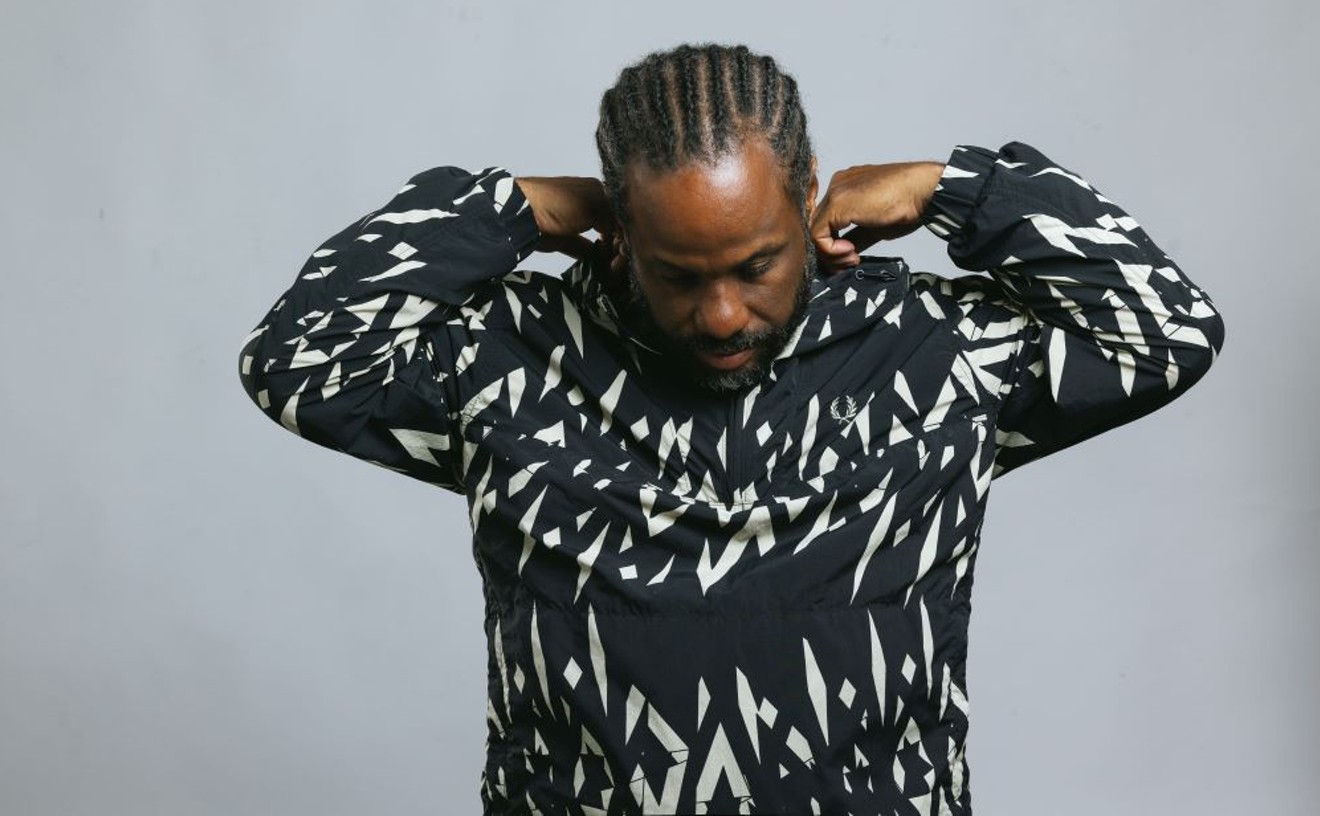As the Devil's right-hand man, the Clown gleefully chews on garbage right out of the can, and, with that rotting cackle of a voice, whatever tumbles out of his too-toothy mouth is just as crappy; his id dwells full time in the Pleasure Dome. He may be the best realization of a comic-book character in movie history--which ain't to say Spawn is much of a movie.
Michael Jai White starts off as Al Simmons, a black-ops agent who's come to question what he does for a living. His corrupt boss, Jason Wynn (Martin Sheen), who's already in business with the Clown (and the Devil) and on his way to being a small-time Super Villain, sells Simmons out on a job--and then kills him. But Simmons is recruited from death by Satan--a computer-generated effect that looks as though it's from the last level of Nintendo's StarFox 64--who offers Simmons a last chance to see his wife, Wanda (Theresa Randle), if he agrees to lead the Devil's army to conquer Heaven.
Simmons becomes Spawn (in the comics, it's kinda the nickname for Hellspawn), but when he returns from Limbo after five years, things have changed: The love of his life has remarried his best friend (D.B. Sweeney); they've produced a cringingly adorable moppet of a daughter; and whatever metropolis he lived in has mutated into the set of Blade Runner--that is, except for the suburbs surrounding Simmons' former house and the gothic alley in which Spawn has taken up residence. The material's got the makings of Tragedy--with a small t, anyway.
Spawn creator Todd McFarlane became a legend by walking away from Marvel Comics in the early '90s, by which point he had become the Spider-Man franchise--he wrote and drew the book during one of its longest best-selling streaks. He and a group of like-minded compatriots--although the proper word is probably capitalists--left when it became evident Marvel wasn't going to cut them in for a bigger chunk of the profits. So they started their own company, Image; McFarlane wasn't the kept man of the media and such critical establishments as Dark Knight writer Frank Miller. McFarlane's Spawn became one of the biggest, if not the biggest independent comic launches of all time. He was a fan favorite whose work consistently did well with its audience--if Miller was comicdom's Brian Wilson, then McFarlane was its Paul McCartney.
With Spawn, McFarlane proved himself to be more than savvy; he was shrewd, waiting to reveal that the tortured Al Simmons was an African-American until several issues into the series, so that race wouldn't become an issue. He also showed his prowess by making his hero an amalgam of the genre's biggest stars: He had the elongated grace of Spider-Man; he sported spikes with a life of their own, much like the X-Men's Wolverine; he stepped out of the shadows with guns a-blazin', as did the Shadow; and he possessed the haunted, too-good-for-this-world soul of the Silver Surfer. All of which is to say that McFarlane blended in a big, butter-cream dollop of the costumed soap-opera stuff that was Marvel's stock in trade to the empowerment fantasy that's a mainstay of superhero books.
If Leguizamo is the finest example of how to convert a comic-book character into a flesh-and-blood film persona, then the rest of Spawn represents some of the worst. Much of the dialogue is the kind of jabber that belongs in thought balloons--even comics characters can't say this stuff out loud. So much of the expository chatter is given to Nicol Williamson, as Cogliostro, the mentor figure who must get Spawn past his anger. (Even the movie acknowledges its predecessors by having Spawn refer to him as "Yoda.")
Leguizamo, in emerging as the star of Spawn, also shows up the limits of computer-generated special effects. The movie was directed by Mark A.Z. Dippe, a special-effects maven getting his first shot behind the camera. And the movie seems to be interested in creating a bleak world that's mostly secondhand: a little here from Batman, a little there from Blade Runner, an opening-credits sequence lifted from Seven. As a result, Spawn feels as though it was inspired by a number of things but has no life of its own--much like its protagonist, unfortunately.
Michael Jai White's face is a mass of brackish scar tissue throughout most of the picture; he moves well enough, almost with an athlete's confidence, but too much of the time he's competing with the effects. That is compounded by the fact that he's not much of a sufferer--Michael Keaton set the standard with his wary, pained Bruce Wayne in Batman. And someone came up with the bad idea of giving him hazel-colored contact lenses once he becomes Spawn, so the one feature that could offer an emotional connection--his eyes--has been obscured. They've replaced an actor with an action figure: With no sense of loss, there's nothing really at stake here. (In the first Robocop, which functioned on the same terms, director Paul Verhoeven at least used a patina of deprivation.) Spawn is a comic book in the worst way--one-dimensional--and the subplot with Spawn agonizing over his wife becomes only a waste of time.
In the HBO animated series based on the comics, which opens with a stiffly rendered prologue from an on-camera McFarlane himself, we get a deeper sense of his vision--the serial (almost soap-opera-y) structure allows him to build. It's writ small, yet despite the crudeness of the storytelling, it
borders on affecting. But Spawn the film reaches for all of the creaky cliches of the genre: The movie underscores its lack of invention by giving a mere gun to a hero risen from the dead. And in the end, that's like giving Dracula pepper spray.
Spawn.
Michael Jai White, John Leguizamo, Martin Sheen, Theresa Randle, D.B. Sweeney. Written by Alan McElroy, based on the comic book created by Todd McFarlane. Directed by Mark A.Z. Dippe. Opens Friday.










